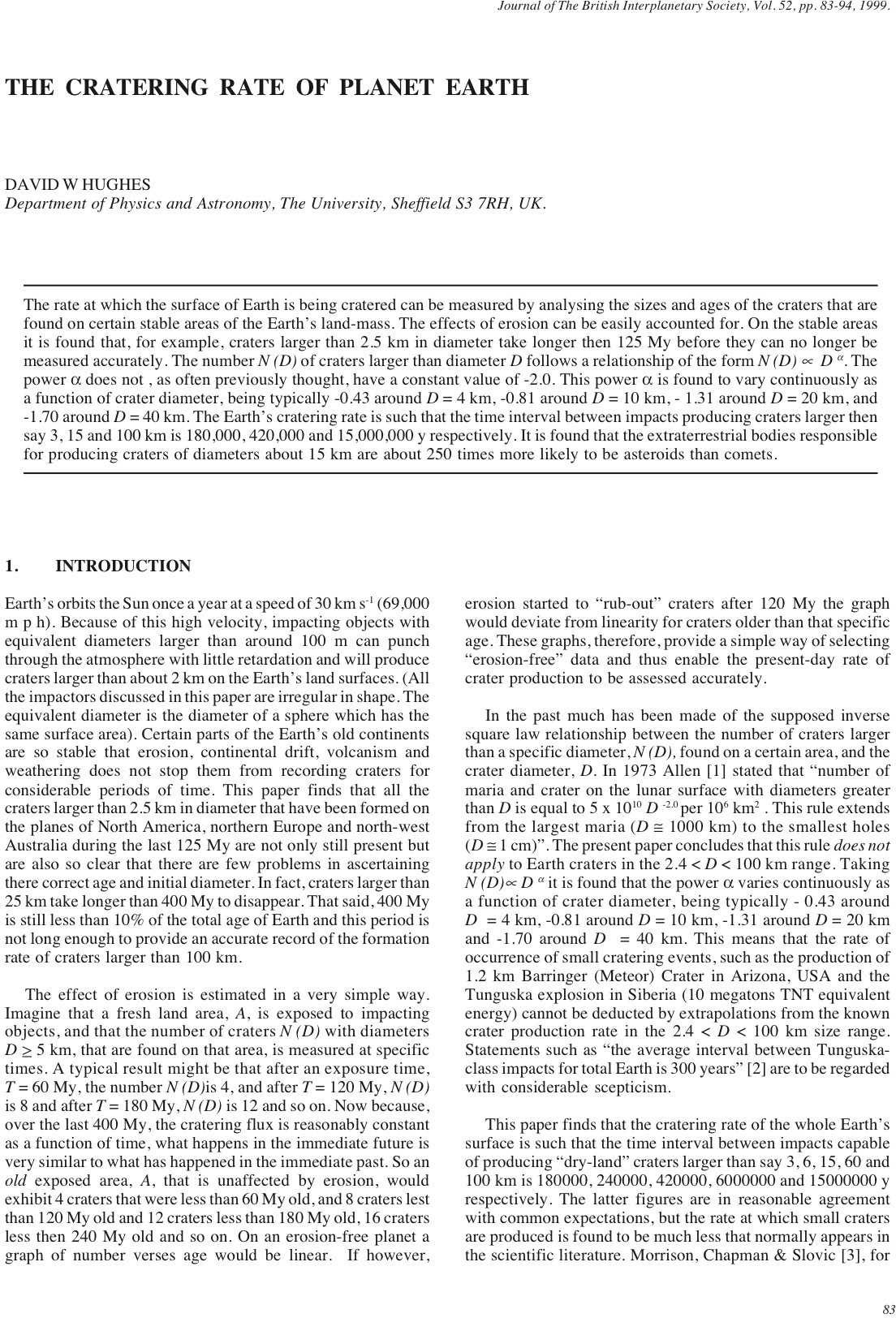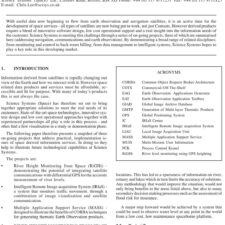The Cratering Rate of Planet Earth
£5.00
Refcode: 1999.52.83
Abstract:
The rate at which the surface of Earth is being cratered can be measured by analysing the sizes and ages of the craters that are found on certain stable areas of the Earth’s land-mass. The effects of erosion can be easily accounted for. On the stable areas it is found that, for example, craters larger than 2.5 km in diameter take longer then 125 My before they can no longer be measured accurately. The number N (D) of craters larger than diameter D follows a relationship of the form N (D) D . The power does not , as often previously thought, have a constant value of -2.0. This power is found to vary continuously as a function of crater diameter, being typically -0.43 around D = 4 km, -0.81 around D = 10 km, – 1.31 around D = 20 km, and -1.70 around D = 40 km. The Earth’s cratering rate is such that the time interval between impacts producing craters larger then say 3, 15 and 100 km is 180,000, 420,000 and 15,000,000 y respectively. It is found that the extraterrestrial bodies responsible for producing craters of diameters about 15 km are about 250 times more likely to be asteroids than comets.





